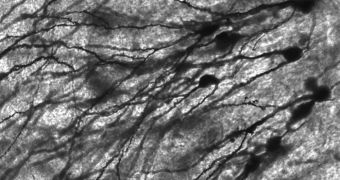A collaboration of experts from the University of Sheffield and the Institute of Electronic Structure and Laser, in the United Kingdom, proposes the use of lasers for treating forms of dementia such as Alzheimer's and Parkinson's diseases.
The team believes that a new generation of lasers may be used to build the complex scaffolding required by replacement cells grown in the lab. This is a major direction of research today, where cells grown in cultures are inserted into the human body to replace damaged or destroyed cells.
When fighting dementia, the situation is especially complex, since experts have to repair neurons. The scaffolding acts as a support structure for the new cells, keeping them in place until they can secure a foothold, and integrate themselves in the target tissue.
Thus far, constructing these support structures has been an intricate effort, requiring a lot of time and resources. The team managed to create a new type of laser, which experts say could be used to construct cheaper and more efficient scaffolding.
According to the team, lasers such as these could enable scientists to move to the next level of control and flexibility. Future generations of scaffolding could be manufactured so that they can be used for very specific functions, something that is nearly impossible today.
These artificial structures are important because they can have a significant impact on the peripheral nerves, spinal cord and brain of Alzheimer's patients, for example. The scaffoldings would act as vehicles for transporting the lab-grown cells to their designated location.
Once the transportation process is complete, the new cells would trigger a process called neural regeneration, which would replace damaged nerve cells with new ones, restoring lost function.
“With these laser direct write techniques, the structure of the produced scaffolds can be optimized for different applications,” study coauthor Frederik Claeyssens explains, quoted by LiveScience.
“For example, we can guide neurons to grow along a given direction, which is important for peripheral nerve repair,” the expert goes on to say. However, he admits that the new technology may need about a decade to fully mature, and be ready for wide-scale applications.
“The population is aging and there will never be enough organ donors. Tissue engineering is the way forward,” concludes study team member Maria Farsari.

 14 DAY TRIAL //
14 DAY TRIAL //